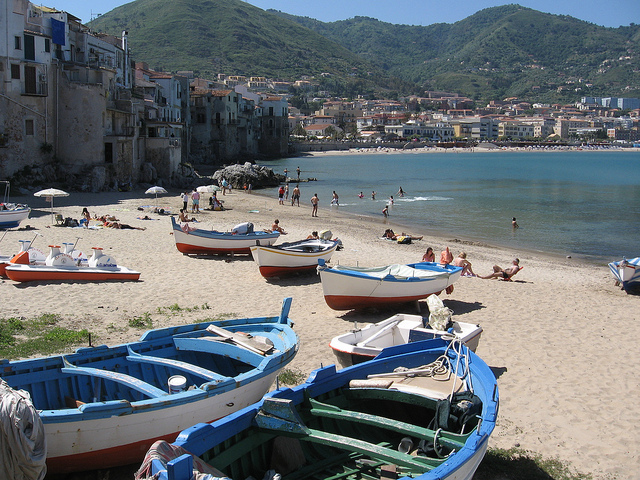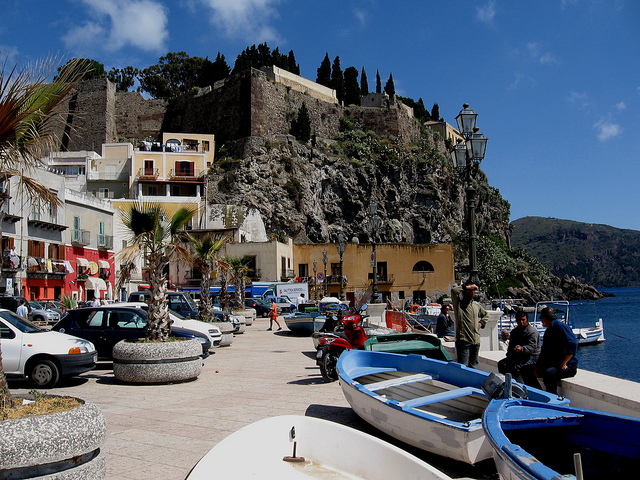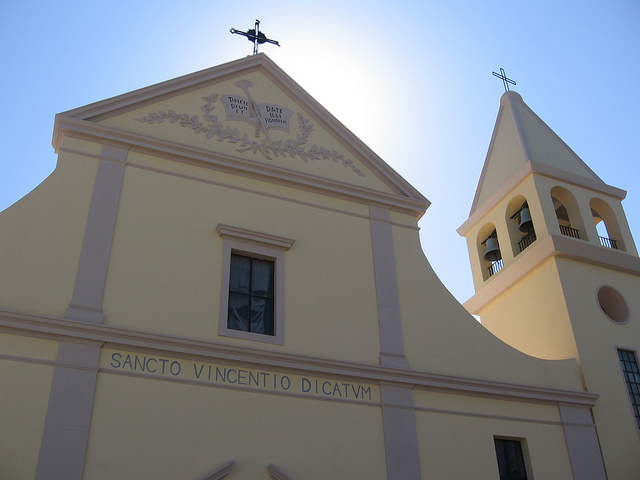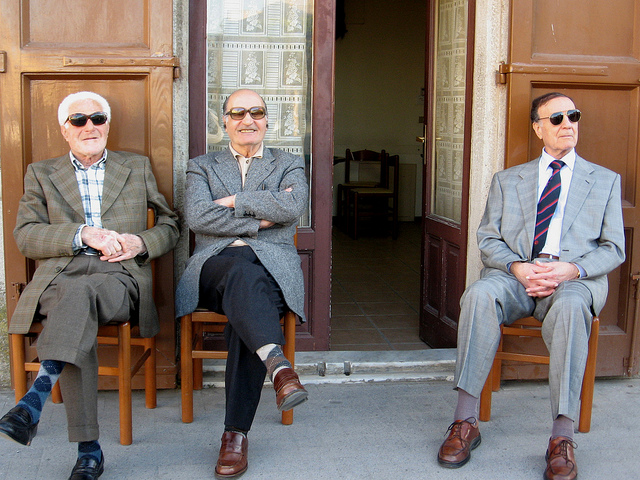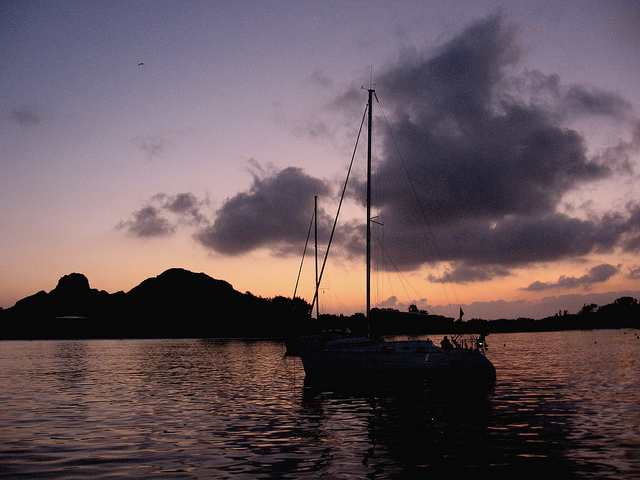An early morning was in store for me: I decided to accompany my newly found friend and sailing buddy Claudia to her bus which would take her to the airport in Catania to return back to her home in Germany. Right next to the bus station, a few steps from the municipal buildings of Milazzo, was a bus stop for a local bus that was going to the train station. I inquired with the bus driver who told me he would be leaving within 10 minutes. Perfect! My backpack contained all the necessities for a day excursion by train to Cefalu, a gorgeous medieval town about two hours west of Milazzo.

The Municipal Building in Milazzo
So Claudia and I had to say goodbye, after spending more than a week together, having enjoyed our intense sailing experience through the Eolian Islands. After a big hug and the promise that we would both see each other again, we went our separate ways. A fifteen minute bus ride took me to Milazzo’s rather unremarkable train station on the outskirts of town where I caught the 8:12 am train to Cefalu.

Arrival in Cefalu
I enjoyed two hours of the beautiful ride along the northern coastline of Sicily, past hills, villages, orchards and vineyards. Just after 10:15 I arrived in this medieval town and I noticed right away that this was a popular tourist destination. The walk downtown was very quick and within 10 minutes I had reached the old medieval section of town. Corso Ruggero is the town’s main street and lined with many retail shops featuring food, fashion and local handicrafts, particularly some of the brightly painted earthenware items such as vases and huge round plates.

Sicilian pottery
Today were municipal elections and several polling stations had been set up around town to allow the locals to cast their vote. I had reached the main square, Piazza Duomo, which is anchored on the eastern side by Cefalu’s Cathedral, an enormous imposing building, starting in 1131 under Norman ruler Roger I. A beautiful square flanked by numerous outdoor cafes was stretching up towards the steps of the Duomo whose size truly dwarfs all the other surrounding houses.

The majestic Norman cathedral of Cefalu
The Cathedral dominates the square with its two massive bell towers. I walked into church but a mass was just being held for a group of boys and girls who were celebrating their First Communion. Far away from the entrance door I could see the extremely well-preserved gigantic Byzantine stone mosaic of Christ Pantocrator with the Virgin Mary, dating back to 1148. Norman churches are generally very rare, and their grey stone austerity differs greatly from the generously ornamented baroque churches that are much more common throughout Europe and Latin America.

A huge Byzantine stone mosaic adorns the cathedral
From here I started to explore the old town of Cefalu. I walked all the way to Via Ortolano, the street furthest north which is separated from the seafront by a row of houses. The Capo Marchiafava rampart, a fortification dating back to the 16th and 17th centuries, testifies to the strategic importance of this town on the northern coast of Sicily.

Square in front of the cathedral
As a matter of fact, similar to other areas of Sicily, Cefalu has been inhabited for thousands of years. During the Greek era it was called Cephaloedis (meaning “head”), and the Greeks, Carthaginians, Byzantines, Romans, Normans and many other feudal groups left their mark on this town. Narrow houses with small windows are built together, and most of them feature hidden interior courtyards, private sanctuaries for generations.

Scene in Cefalu
At the northern end of Via Ortolano is an opening towards the small fishing harbour of Cefalu. A small sandy beach provided a great opportunity for local kids to cool off, restaurants with outdoor terraces invited to have a cool drink, and Japanese tourists, well sheltered from the noon time sun, were sitting in a corner of the beach, painting the scenic waterfront.

The fishermen’s harbour of Cefalu
I relaxed a bit on a bench, watching the scene and continued my walk westwards along Via Vittorio Emanuele, the main street running along the northern waterfront of Cefalu, separated from the water by narrow medieval fishermen’s houses.

The Gothic Porta dei Pescatori
